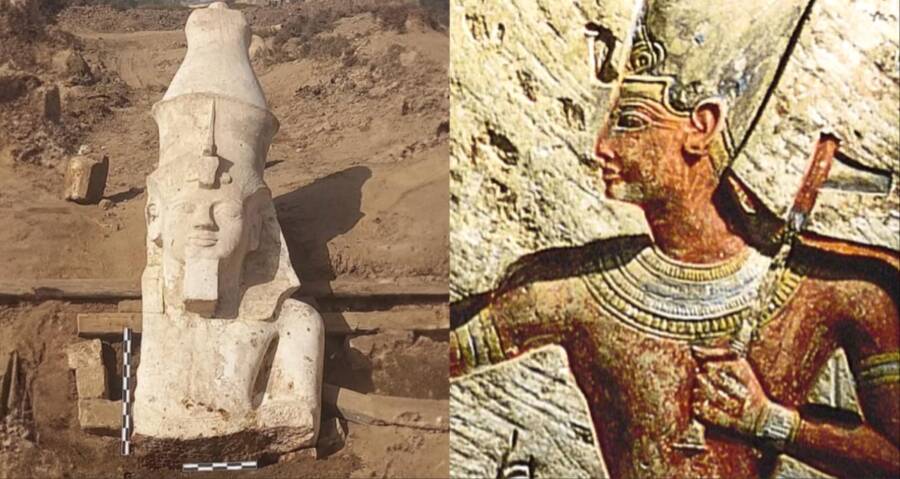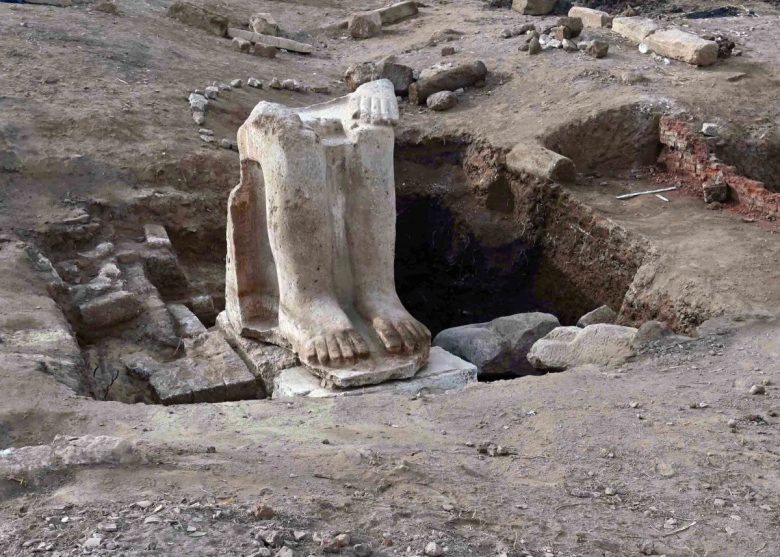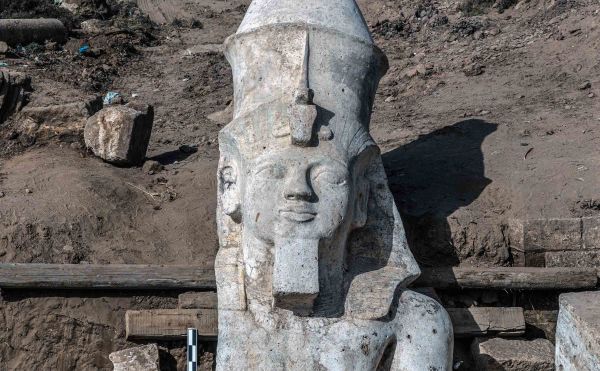In an extraordinary archaeological achievement, researchers have located the long-missing upper half of an ancient statue representing the renowned pharaoh Ramesses II, solving a mystery that has persisted since 1930. This significant find, made during ongoing excavations at the site of the ancient city of Hermopolis Magna (Khemenu) in Middle Egypt, offers fresh insights into the magnificence and legacy of one of Egypt’s most formidable rulers.
Putting the Pieces Together

The saga began in 1930 when German archaeologist Günther Roeder discovered the statue’s lower half at the site. For nearly ninety years, the upper section remained hidden, leaving the archaeological community both perplexed and fascinated. Recently, however, a collaborative team of Egyptian and American researchers, led by Basem Gehad and Yvona Trnka-Amrhein, has successfully completed this historical puzzle. Their excavations, part of the City of the Baboon Project—a partnership between Egypt’s Supreme Council of Antiquities and the University of Colorado—have been underway since January 2023. It was during these efforts that they unearthed the long-sought upper half of the majestic statue, which stands an impressive 12.5 feet tall.
A Window into History

The newly unveiled portion of the statue showcases elaborate hieroglyphic inscriptions and portrays Ramesses II, the famous pharaoh who governed Egypt’s New Kingdom as part of the 19th Dynasty over 3,000 years ago. The statue, adorned with a double crown and a headdress featuring a cobra, serves as a tangible link to the splendor and might of this legendary leader. Ramesses II, also known as Ramesses the Great, is celebrated for his expansionist strategies, stretching his empire from present-day Sudan to southern Syria through his ambitious construction of grand temples, obelisks, and statues during his 66-year reign—the second-longest in Egyptian history.
A Discovery of Great Importance
The importance of this discovery is immense. Archaeologists highlight that this marks only the second colossal statue found in Middle Egypt, unlike many such monuments typically associated with major pharaonic sites like Karnak in Luxor. Once the top and bottom halves are reunited, it will be the first complete colossal statue from Middle Egypt and the first to undergo analysis using contemporary technological and archaeological techniques.

Unraveling Further Mysteries
Currently, researchers are in the early stages of studying the colossal statue and plan to produce a comprehensive scientific publication detailing their findings later this year. This discovery is poised to illuminate new aspects of the religious landscape and urban development of ancient Hermopolis Magna, a crucial center for worship dedicated to the Egyptian god Thoth, linked with both the ibis bird and the baboon.

The rediscovery of Ramesses II’s colossal statue’s missing upper half represents a significant triumph in archaeological inquiry and underscores the lasting legacy of one of Egypt’s most iconic pharaohs. This remarkable find not only completes a long-standing enigma but also paves the way for deeper understanding of ancient Egypt’s rich cultural and historical fabric. As researchers continue their detailed analysis, the world eagerly anticipates the revelation of the secrets held by this colossal statue, providing a fascinating glimpse into a magnificent past.

